Articles

A Spa Is Not A Small Pool
09.20.2023
Taylor Technologies
Spas and pools are both filled with water and need to be tested and treated regularly, but that's where the similarities end. Understanding the uniqueness of a spa (some people call it a hot tub)—its higher temperature, smaller volume, jetted water, and likelihood of high bather load—is important to establish a proper testing and treatment regime. While pools are generally in the 7…
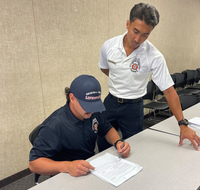
Leadership by Walking Around
09.20.2023
Aquatics International | Pete DeQuincy | August 2023
It’s that time of season. Lifeguards and swim instructors are beginning to prepare for the next stage: returning to high school or college, entering college for the first time, taking a gap year, or beginning life after college. For some it’s easy. For others, it can be paralyzing. So what should I do? Immediately, I think of, “Whatever it takes to finish the season strong, …
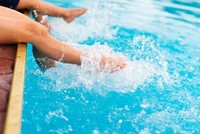
A five-step process for better behavior at your community pool
06.28.2023
HOA Resources | Laura Otto
Q: We keep getting complaints about neighbor behavior at our community pool. It’s driving us crazy — the pool is supposed to be fun, but it’s become a sore spot at meetings. What can the board do to reign in some of the offenders? Who doesn’t love a community pool? I love this question, first because it reminds me of summer, but second because it reminds me that the bes…
Fecal Matter in Your Pool Stinks!
06.28.2023
Pool Newsletter - Washington County Public Health & Environment. June 5, 2023.
Following the CDC guidelines for a fecal accident is important to help reduce the risk of a Recreational Waterborne Illness (RWI). As indicated in the guidelines, there is a difference in bacterial contents of formed stool vs diarrhea, which determines the action required by staff. A Formed stool may contain no germs, a few, or many that can cause illness. The germs that may be present are les…
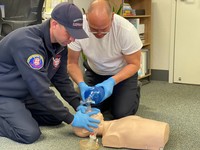
A Critical Refresher on Ventilations
05.03.2023
Aquatics International | Pete DeQuincy | April 2023
Effective ventilations should be a priority for in-service training of staff. Providing ventilations is difficult and must be practiced frequently to maintain a high level of proficiency and readiness. Provide clear messaging about why staff must train on this skill: “Doctors, nurses, paramedics, fire and first responder personnel must train routinely on ventilations. Lifeguards are firs…
Best Practices When Testing Water
05.03.2023
Taylor Technologies | Wayne Ivusich
Start the swim season with fresh reagents, and replace missing instructions and any broken, faded, or stained equipment. Reagents are perishables. Just like a head of lettuce or the pills in your medicine cabinet, the chemicals in a test kit (or on a test strip pad) will degrade over time, even under optimum conditions. The process of deterioration speeds up though when storage conditions are …
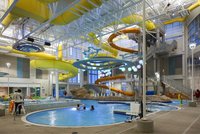
Developing and Enforcing the Rules in Multi-Use Aquatics Venues
05.03.2023
Aquatics International | Rebecca Robledo | April 2023
It’s no wonder that leisure pools are becoming more popular around the country. As aquatics facilities need to attract more and different audiences, it only makes sense to offer features that will appeal to all ages, interests and energy levels. But as leisure pools are becoming the norm, so is the need to stave off chaos. Considering all the different types of programming that can take…
How To Take A Pool or Spa Water Sample
05.03.2023
Taylor Technologies
First, find a location away from return lines. If the pool has a shallow and a deep end, take the sample near the point where the bottom of the pool starts to slope toward the deep end. If the water is of uniform depth, positioning is not as important as long as you are not near any return lines or dead zones like a corner or steps. If testing a spa, make sure the jets and blowers are turned of…
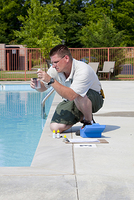
Busting Water Maintenance Myths
02.14.2023
Pool& Spa Marketing | Patricia Fitzgerald | April 2012
There are plenty of misconceptions about water chemistry and testing floating around. Aside from the one about a dye that will detect people peeing in the pool, which can be helpful if swimmers believe it, they all impede our ability to manage water quality. So let’s do some myth busting. Myth 1: Experienced pool/spa operators can tell if there are issues with water quality by simply loo…
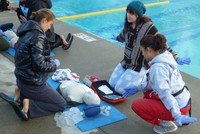
Lifeguard Trainers: Now's the Time to Develop Your In-Service Plan
02.14.2023
Aquatics International | Pete DeQuincy | January 2023
Welcome to 2023. Now is a great time to draft an in-service training plan for this summer. For new leaders and trainers, let’s define in-service and several of its categories; lay out a timeline for a swim season that runs from Memorial Day to Labor Day; and, within the Readiness category, do a walk-through of how the rescue skills should be broken down within a week and a month. For th…